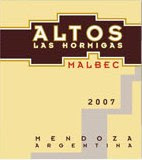This is only the fourth time in my 25 years in the wine business that I've joined a new company, so I'm a little preoccupied.

Meantime, on a long drive from a trade tasting this week, I resumed thinking about the blog and a subject I've touched on briefly in the past. It's the halo effect, something that a lot of MBA's in the wine world use as an excuse to expand a winery's offering far beyond its original fame and reputation.
What got me to thinking about this is a new book from a veteran business journalist. Entitled Trade-Off: Why Some Things Catch On, and Others Don't, its primary theme is that products of any kind can appeal to our sense of quality or our sense of convenience but not to both. The author is Kevin Maney, former USA Today and Fortune magazine columnist. I'm a fan of his, too. He's also a musician and plays a Fender Stratocaster, as do I, and wrote and recorded a song entitled "Wouldn't Want to Be Bill Gates." Hell, yeah.
Quality implies snob appeal; convenience implies ease of purchase and low cost. Think Nieman-Marcus vs. Wal*Mart. Maney call this the "fidelity swap." He defines it as the ever-present tension between fidelity (the quality of a consumer’s experience) and convenience (the ease of getting and paying for a product).
Many companies not just in the wine business have a corporate strategy to grow a brand beyond its original market. "It looks tempting," Maney writes, "Some companies believe they can get there, and life will be beautiful. But as it turns out, any company or product that attempts to capture both is likely to fail."
In the wine world many of those companies are owned by conglomerates and staffed by MBA's with little or no experience in wine. They see brand equity in the same way some homeowners viewed their property's equity until recently--just something to spend. Well, as many homeowners have found the value of their homes decline, they've found equity to be elusive. So, is it far-fetched to believe that these conglomerates who have sucked the equity out of established wineries won't or aren't meeting the same fate?
Robert Mondavi (the brand not the man), Beaulieu Vineyards (BV), Beringer, Sterling, Penfolds, Ravenswood, and even the storied 1st Growth Bordeaux Chateau Mouton Rothschild (Mouton Cadet, et al) have spent their equity with cheap, convenient imitations of their fidelity brands. We in the business like to think that these massive line extensions answer consumer demand, that the consumer knows full well the difference between Robert Mondavi Napa Valley wines and Robert Mondavi Private Selection, between Beringer Private Reserve Chardonnay and Beringer Founder's Estate Chardonnay, between Penfolds Bin 389 Cabernet-Shiraz and Penfolds Koonunga Hill Shiraz-Cabernet.
They don't.
A very earnest gentleman came up to me at the aforementioned trade tasting and after tasting an Argentinean Malbec at my table proceeded to tell me that the upswing in Malbec's popularity was due to the fact that Malbec is a dry wine with no sugar, thereby making it a safe beverage for diabetics. I'm not a doctor, nor do I play one in this blog, but come on.
The point here is that this is the kind of misinformation common out there, folks. The average consumer likes to drink wine and doesn't care to research it much. We're kidding ourselves if we think most wine drinkers care to delineate the differences in these line-extended brands. So buy the cheap imitation. It's convenient, costs less, and is easy to understand. Convenience, yes; fidelity, no.






 We Americans have an inferiority complex, especially when it comes to adopting something from an older culture. I had a classics history professor in college who, when I expressed a preference for American history, harrumphed, "America doesn't have history; America has 200 years of current events."
We Americans have an inferiority complex, especially when it comes to adopting something from an older culture. I had a classics history professor in college who, when I expressed a preference for American history, harrumphed, "America doesn't have history; America has 200 years of current events."



